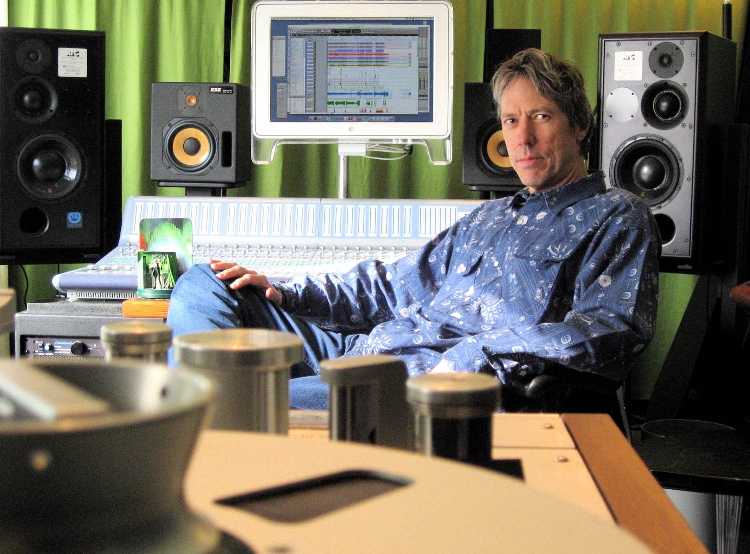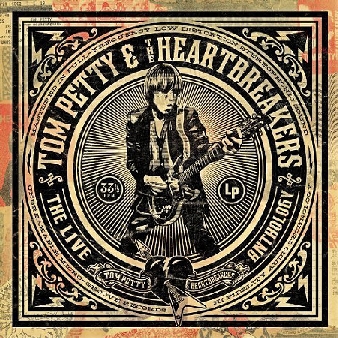
LOS ANGELES, CALIFORNIA – APRIL 2010: To say it was an ambitious project is an understatement. Veteran recording engineer/producer Ryan Ulyate, who has worked closely with legendary rocker Tom Petty and guitarist Mike Campbell since 2005, was charged with the task of compiling and organizing the individual songs from over 250 Tom Petty and the Heartbreakers concerts from their over thirty years together. After selecting only the “A+” material with Petty and Campbell, he then mixed five CDs-worth of material sequenced without regard to chronology. The challenge, apart from the sheer volume of the task, was to obtain a consistent sound from recordings spread across three decades made by different engineers using vastly different technologies. Ulyate relied on his ATC SCM 50 ASL three-way active monitors to reveal the truth in every mix, and the consistency he was able to achieve effectively makes The Live Anthology a time machine that zips backward and forward across the years to build five perfect Tom Petty and the Heartbreaks concerts.
“When we started compiling the tapes and files, Tom Petty and the Heartbreakers had been playing together for thirty years,” said Ulyate. “It took me months to digitize and convert everything into a common format.” When it was all done, the engineer had filled some thirty terabytes of hard drive space with raw multitrack material. As he worked, Ulyate recorded rough mixes and developed an organization and rating system. All of the approximately 5,200 rough mixes went into iTunes for scrutiny by the co-producers of The Live Anthology, a tribunal comprised of himself, Petty, and Campbell. Only after the best performances were identified, would Ulyate spend time carefully mixing.
 “Searching through all those takes was a big job to be sure and took weeks,” said Ulyate, “but it wasn’t quite as daunting as it might seem. Tom is a pretty tough critic and so it was easy to toss any song that was imperfect in any way, and we often knew that twenty seconds in. When we had 169 takes of ‘American Girl,’ we felt pretty comfortable skipping over the blemished ones.” Rather than limit their picks to a predetermined number, Petty preferred to select all of the truly “A+” material and release it. Out of 5,200 takes of an extremely talented band, there turned out to be quite a few ideal ones!
“Searching through all those takes was a big job to be sure and took weeks,” said Ulyate, “but it wasn’t quite as daunting as it might seem. Tom is a pretty tough critic and so it was easy to toss any song that was imperfect in any way, and we often knew that twenty seconds in. When we had 169 takes of ‘American Girl,’ we felt pretty comfortable skipping over the blemished ones.” Rather than limit their picks to a predetermined number, Petty preferred to select all of the truly “A+” material and release it. Out of 5,200 takes of an extremely talented band, there turned out to be quite a few ideal ones!
With the selections made, Ulyate secreted away in “Ryan’s Place,” his personal L.A. studio overlooking scenic Topanga Canyon. His Pro Tools system is a nearly perfect copy of Petty’s rig, which allows the two to go back and forth without a hiccup. He mixes in the box and monitors on the ATC SCM 50 ASLs together with a Bag End Infrasub-18 subwoofer. Auratones provide a small speaker reference.
“With so many multitrack recordings made by so many different engineers in so many different places on different equipment, getting a consistent sound that conveyed the feeling of a live show was my overriding goal and challenge,” said Ulyate. “A lot of the time I was effectively fighting with engineers or the live situations they were faced with. For example, several of the recordings were obviously heavy on the mid-range. Compared to a flat recording, they sounded honky, with small, ugly guitars. So I had to do a lot of sculpting in the mid-range.”
He continued, “That’s where the ATC monitors were especially helpful. They have the best mid-range of any loudspeaker I’ve ever heard. A lot of speakers seem to have big black holes in the mid-range, where it’s impossible to tell exactly what I’m doing. With the SCM 50s, I can hear the difference between a 1 dB boost at 1.1 kHz and one at 1.2 kHz!” In keeping with the live feel of the album, Ulyate mixed at approximately 93 dB, an approach that would have been difficult without the non-fatiguing performance of his ATCs. To be sure of the consistency from track to track, he imported each finished mix into subsequent sessions so that he could A/B conveniently.
“No one knew the sequence of the songs while I was mixing them,” Ulyate explained. “When I finished, Tom took them and played with sequencing for a few weeks. Because they were so consistent, he was free to arrange them any way he pleased, and in the end that’s exactly what he did. Each disc is like an ideal performance, with song sequence forming the sort of emotional arc that takes you some place. While in reality the songs may be zipping from the late 1970s to the 2000s and back again, the tone between them makes those chronological transitions transparent.”